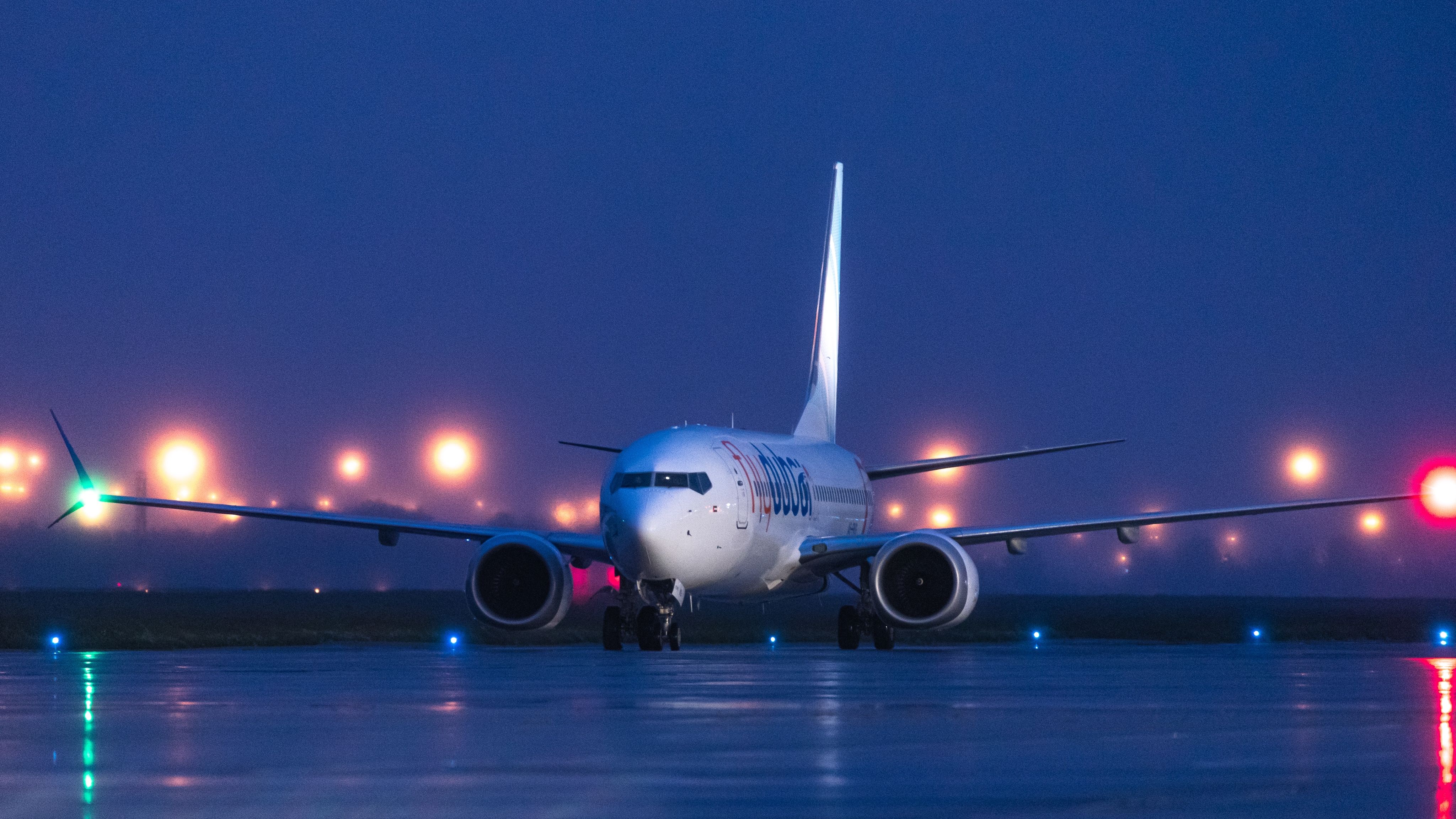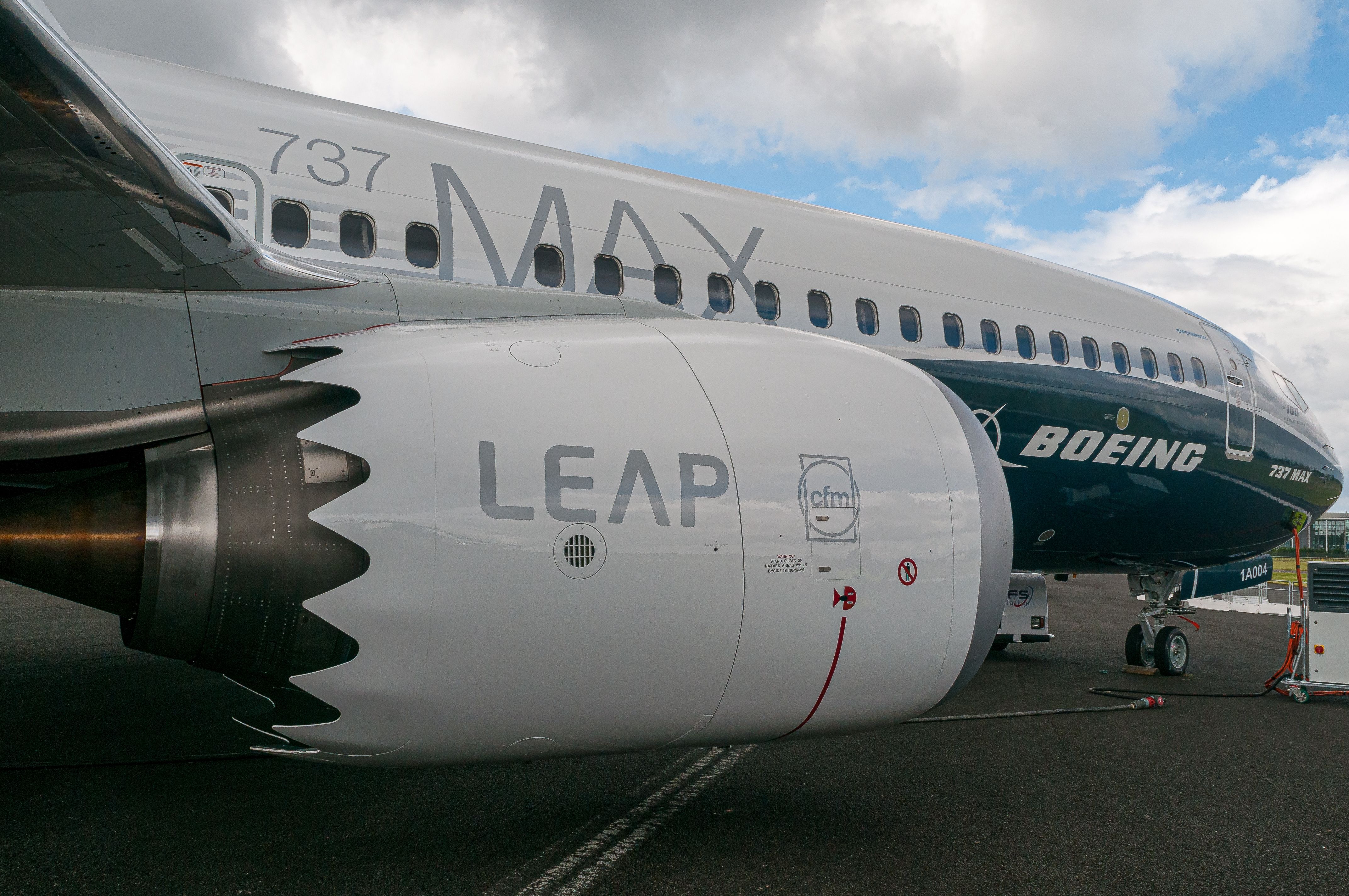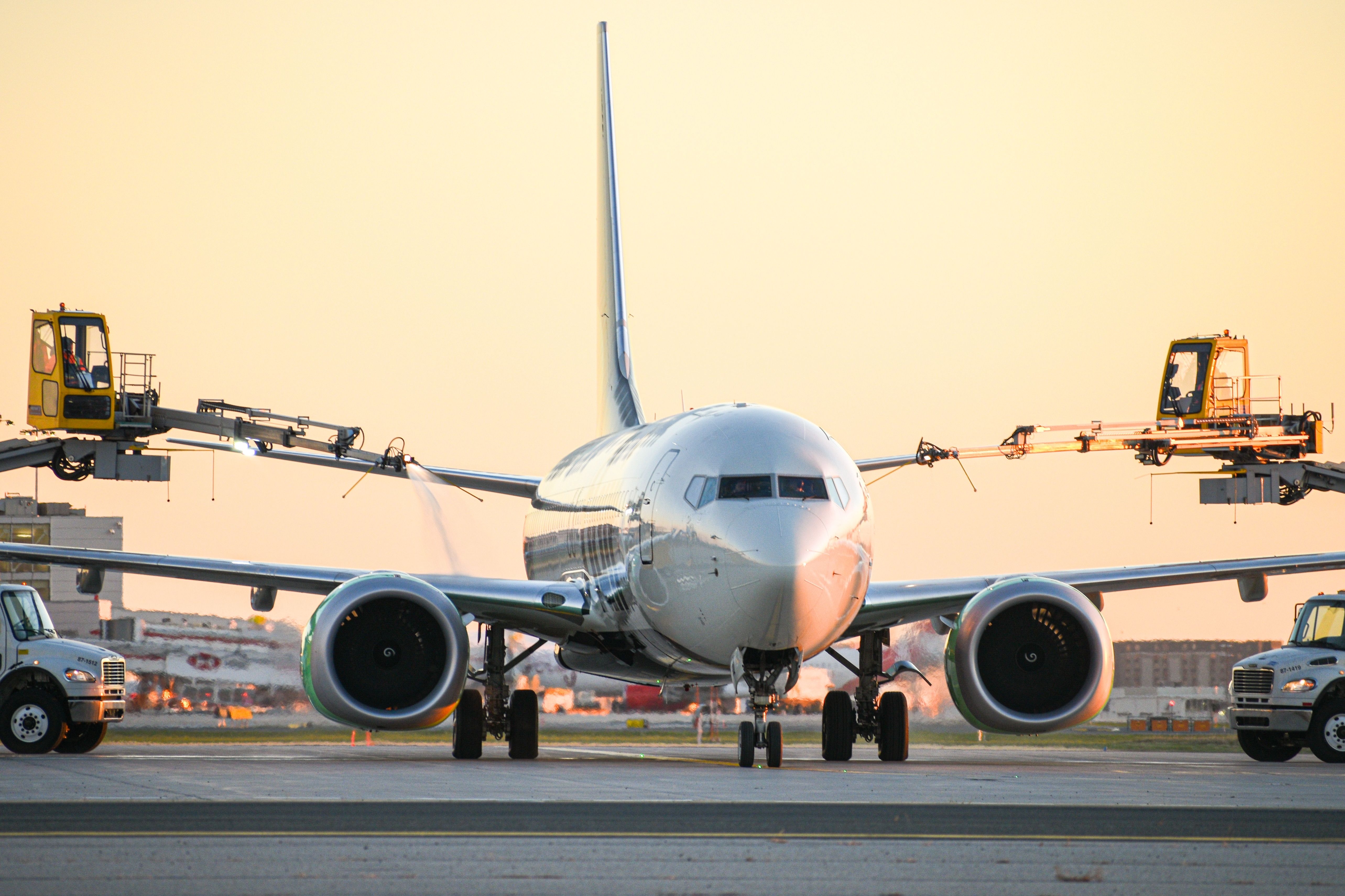NTSB Issues Rare But Urgent Warning Of Potential Boeing 737 MAX Engine Problems
On Wednesday, the听听National Transportation Safety Board (听) issued an urgent safety recommendation addressing the cause of smoke entering the cockpits and cabins of airplanes equipped with CFM International LEAP-1B engines. This follows two incidents that occurred in 2023, in which Boeing 737 MAX 8s suffered bird strikes shortly after takeoff. Both had to make emergency landings due to smoke filling the cabin shortly afterward.
- Launch Customer(s)
- Malindo Air
- Length
- 129 ft 8 in (39.52 m)
- Wingspan
- 117 ft 10 in (35.9 m)
- Height
- 40 ft 4 in (12.3 m)
罢丑别听听are used on several narrowbody passenger jets, including the Boeing 737 MAX family of aircraft, the听, and the听. As smoke inhalation can incapacitate or even kill within seconds, the NTSB has issued a recommendation to the Federal Aviation Administration (FAA), asking the agency to ensure that operators inform flight crews of airplanes equipped with the affected engines and suggest software solutions.
听
How Does The Problem Occur?
 Photo:听Alexandr Zimovskoy | Shutterstock
Photo:听Alexandr Zimovskoy | Shutterstock
As reported in an听听by the NTSB, the safety body has issued recommendations to the FAA, the European Union Aviation Safety Agency (EASA) and the Civil Aviation Administration of China. These concerns stem from an investigation into the second of the 737 MAX smoke-in-cabin incidents, which were caused by bird strikes following takeoff.
- In March 2023, vapor fog filled the passenger cabin of a Southwest Airlines 737 MAX 8 shortly after departing Havana, Cuba. Birds had been ingested into the right engine, and the aircraft made an emergency landing at Havana.
- In December 2023, acrid white smoke entered the airplane after a bird was ingested into the left engine of another Southwest Airlines Boeing 737 MAX 8 shortly after takeoff from New Orleans, Louisiana. Again, the aircraft made an emergency landing at New Orleans.
As a result of the investigation by the NTSB, it was found that the operation of the engine Load Reduction Device (LRD) can result in damage to the engine oil system, allowing smoke from hot oil to enter the ventilation system, eventually leading to smoke entering the cockpit or passenger cabin. The LRD is a safety feature designed to reduce the severity of vibrations transmitted from a damaged engine to the airframe. According to the听, this can cause particular problems during takeoff or landing:
"It is critical to ensure that pilots who fly airplanes equipped with CFM International LEAP-1B engines are fully aware of the potential for smoke in the cockpit if the load reduction device is activated during a critical phase of flight (takeoff or landing)."
More About The Recommendations
 Photo:听Wirestock Creators | Shutterstock
Photo:听Wirestock Creators | Shutterstock
The NTSB recommends that all operators of the affected engines incorporate software modifications developed by CFM and Boeing. The report showed that the pilot could manually turn off the air intakes from the engines to the air regulation system, which helps regulate pressure in the cabin and ensures that passengers and crew get fresh air. The software听"would likely close the pressure-regulating shutoff valve more quickly, thus minimizing the quantity of smoke and reducing the flight crew鈥檚 workload."
The FAA has already considered听听to operators, instructing them to turn off airflow to the aircraft鈥檚 interior as a temporary measure, according to Flying Mag. However, at the time, the FAA deemed it not to be an immediate flight-safety issue.
Boeing has also taken steps to inform pilots about the issue by revising flight manuals to include necessary steps to prevent smoke from entering the cockpit or cabin following an LRD activation. The NTSB report said this measure was of urgent importance, recommending that it be adopted in every plane that uses LEAP engines equipped with the LRD.
听
While the FAA deemed no immediate action was necessary, the two companies have been developing a software update.
One Problem Solved, Another Created
 Photo:听Peter Bueno | Shutterstock
Photo:听Peter Bueno | Shutterstock
While the LRD intent is to limit damage to the fuselage when an engine starts to come apart, the system has created a new problem by causing the release of oil, which then burns and causes smoke to enter the internal air system. If sufficiently adopted, the software changes recommended by the NTSB will increase safety in the skies for all LEAP-equipped aircraft.
For Boeing, the problem highlighted by the investigation is yet another blow to the reputation of the 737 MAX. Another example was the MCAS system, which was responsible for two fatal crashes. Both the MCAS and LRD systems introduced potentially deadly problems while intending to solve comparatively lesser ones. While Boeing was not directly responsible for the latter, the recommended software solution is another band-aid fix, which would not have been necessary if design standards had been higher in both cases.
